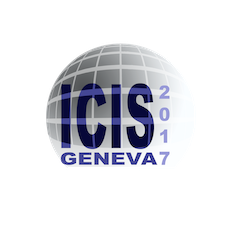Speaker
Description
This study relates to the negative ion source for Neutral Beam Injection (N-NBI [1]). Production of negative ions plays an essential role in N-NBI. A negative ion beam with an energy of 1 MeV and a current of 40 A (a negative ion current density of 20 mA/cm$^{2}$) is required for 3600 s to produce 16.5 MW of power. Conventional negative ion sources require cesium seeding to obtain high negative ion density by surface production. However, cesium seeded surface production of negative hydrogen ions is not desirable from the point of view of operating steady state ion sources. On the other hand, our experimental setup (sheet plasma device TPD-Sheet IV [2]) can product high density negative hydrogen ion in cesium-free discharge by using the magnetized sheet plasma. We observed that there is negative hydrogen ions by mass spectrometry and performed an experiment of negative hydrogen ion extraction. Under a secondary hydrogen gas entering the hydrogen plasma, the peak position of the negative hydrogen ion density (nH$^{-}$) is localized in the periphery of the sheet plasma.[3,4] It is found that negative hydrogen ions are formed by the dissociative attachment of low energy electrons (Te = 1-2 eV) to highly vibrationally excited molecules, which are attributed to the electron-impact excitation of molecules by high energy electrons (Te > 10 eV) in the plasma column, and they are transported to the periphery of the sheet plasma. The negative hydrogen ion density were detected using an Omegatron mass analyzer, while the electron density and temperature were measured using a Langmuir probe. We carried out current measurement at collector and calorimetry using the calorimetry method with a thermocouple by single aperture extract device. As a result, when the extraction voltage was 3.0 kV and the discharge current was 50 A, a negative hydrogen ion current density of 7.0 mA/cm$^{2}$ was obtained by current measurement at collector. Also, in the calorimetry method using thermocouples measured at the same time, a negative hydrogen ion current density of 5.5 mA/cm$^{2}$ was obtained.
References
[1] P. Franzen, D Wünderlich, U Fantz and the NNBI Team, Plasma Physics and Controlled Fusion 56 (2014) 025007.
[2] A. Tonegawa, et. al., Jpn. J. Appl. Phys. 45 (2006) 8212.
[3] Satoki MATSUMOTO et. al., JPS Conference Proceedings 015042 (2014).
[4] T. Takimoto, et. al., Journal of Advanced Science, Vol. 28, 11009 (2016)
